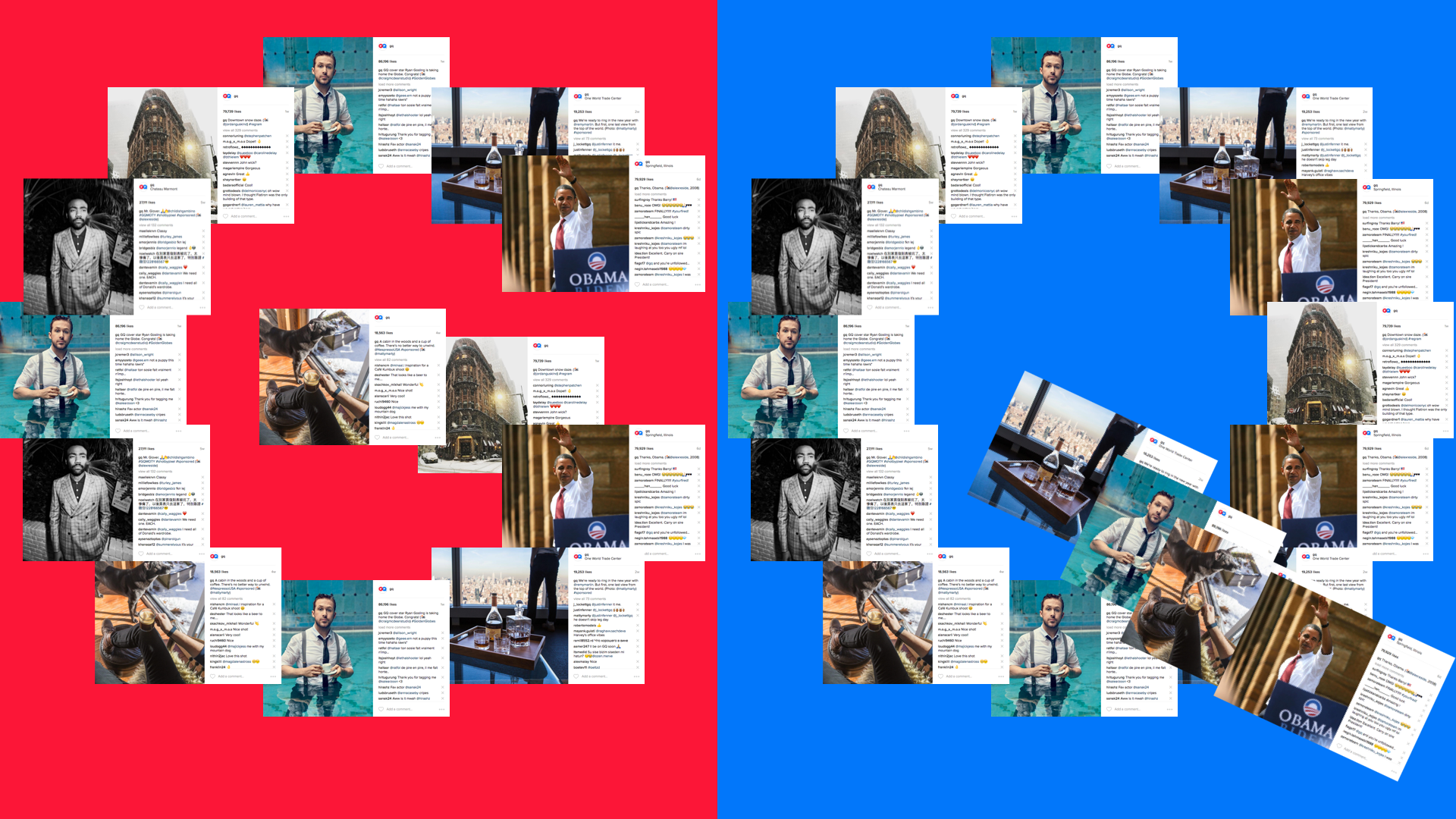
Instagram contributed 7 percent of GQ’s total digital revenue in 2016.
Instagram may not be sharing with publishers any of the revenue from its new between-Story ads. But that doesn’t mean publishers aren’t able to make money on Instagram. For Conde Nast’s GQ, Instagram generates more revenue than any other social network, including Instagram’s parent company Facebook.
Last year Instagram accounted for roughly 7 percent of GQ’s total digital revenue and 70 percent of its revenue from social platforms, which also included Facebook and Snapchat.
“Two years ago we really decided that Instagram was a platform we wanted to go all-in on because it plays to all of GQ’s historical strengths. It’s a great place to experience men’s fashion, style and lifestyle content,” said Mike Hofman, executive digital director of GQ, which boasts 3.3 million followers on Instagram.
GQ, which boasts 3.3 million followers on Instagram, makes money on Instagram primarily the same way celebrities, or “influencers,” make money on Instagram. It gets brands like Coach, Nespresso, Remy Martin and Tudor to pay for sponsored photos posted to GQ’s Instagram account. As much as those branded posts resemble the ones celebrities’ publish, they also mirror the advertorials GQ has published in its print pages for years.
Early on a lot of the sponsored posts that GQ published to its account were supplied by the advertiser, which was made those posts “tough to fit within the feed,” said GQ’s social engagement editor, John Lockett. But over the past couple of years, GQ has gotten more involved in the production of sponsored posts, such as by bringing its social and photo teams to the table. And it also bundles Instagram into broader sponsorships, as it did for a travel story that was sponsored by Canada where the photographer shot photos to run on Instagram.
“We want [sponsored posts] to feel at home and of a kind with the editorial content that’s in the same feed. Instagram is a great place to do that,” said Hofman.
But Instagram isn’t the only place where GQ is applying its aesthetic for advertisers. In the two years since GQ went all-in on Instagram, GQ’s social revenue is no longer all about Instagram,. That’s largely because of Instagram.
In 2015 Instagram brought in 90 percent of GQ’s social revenue; in 2016 Instagram’s share dipped to 70 percent. But the reason Instagram’s share dipped isn’t because GQ struggled to make money on Instagram, but because it was able to translate its Instagram success to Facebook and Snapchat, two platforms where the publication began posting more branded content in the second half of 2016.
While the new money made from Facebook and Snapchat helped GQ’s overall social revenue grow by 799 percent year-over-year in 2016, the majority of GQ’s social revenue growth actually came from Instagram; 78 percent of it, in fact.
“Instagram is our biggest platform by audience, and it’s our fastest growing platform. And Instagram has always led the way in terms of social revenue,” said Hofman.
Even as GQ’s social revenue pie expands, Instagram’s slice may not shrink into a minority share. For starters, GQ’s Instagram audience remains larger than its Facebook audience by roughly 1 million people. And then there’s the potential for Instagram to drive a lot of traffic to GQ’s site.
In November Instagram enabled verified profiles, like GQ’s, to insert links into their Stories that people could swipe up to open an in-app browser and visit a chosen URL. GQ, like other publishers as well as brands, was quick to try out these links. If people on Instagram were willing to swipe up on a link, then GQ could not only send them to its own site, where it could show them ads and make money, but also to advertisers’ or e-commerce sites, where it could help brands drive sales and drive up its value to those brands.
Since the introduction of links in Stories, GQ’s traffic from Instagram has doubled, said Lockett. With 10 percent of people, on average, swiping-through a link in GQ’s Stories — in addition to those people clicking on links inserted in GQ’s Instagram bio — traffic driven to GQ’s site from Instagram is the six-digit range, said Hofman.
And GQ has already started using links in Instagram Stories to drive traffic for advertisers. Over the holidays GQ produced its “first shoppable Story” for Michael Kors that linked to items featured in the Story, said Lockett.
About The Author

